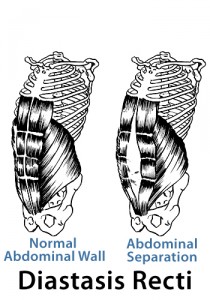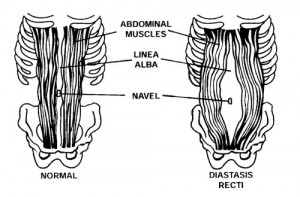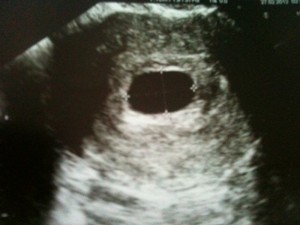What is Diastasis Recti?
Page Contents
It is a condition that leads to a detachment of the Rectus Abdominis muscle into left and right halves. Usually, two edges of the muscle are attached at the Linea Alba located at the middle part of the body. Simply put, it is a disorder that results in a separation of the left and right areas of the rectus abdominis muscle that covers the front part of the belly.
Diastasis Recti Causes
Some of the main causes of Diastasis Recti are:
Congenital
This is a common condition that affects newborns and is especially frequent in premature babies as well as infants of African American origin. The disorder arises when the rectus abdominis muscles push into the ribs that are more distant from the middle part of the body than in usual cases.
Chromosomal
This condition may also arise from Trisomy 18, a genetic disease that may also occur along with more skin folds in the region surrounding the neck as well as other disorders like Cryptorchidism and Hernias.
Pregnancy
Acquired cases of Diastasis Recti are often seen in pregnant women. In some women, the abdominal wall cannot bear much pressure ehich leads to a seperation of the Rectus Abdominis muscles. Multiple births, delivery of infants with high birth-weight and repeated pregnancies often result in this disorder. Women who are pregnant for 12 weeks or over should refrain from performing heavy abdominal exercises which can make the condition worse.
The condition also arises in people with poor abdominal tone as well as aged and obese individuals.
Excessive pressure over the abdominal walls in women with more than one pregnancy or pregnant women with more than one fetus can also cause this condition and make the delivery complicated.
Diastasis Recti Symptoms
A Diastasis Recti appears similar to a ridge and passes down the mid-section of the belly region. It extends from the end of the breastbone to the belly button. The condition enhances with straining of muscles.
Symptoms of Diastasis Recti are commonly witnessed in women who undergo more than one pregnancy because of stretching the abdominal muscles for multiple times. If the condition appears in the initial stages of pregnancy, presence of additional soft tissue and skin in the front area of the wall of the abdomen may be its only symptoms. The top of the enlarged uterus in pregnant women is often seen protruding out of the wall of the abdomen in the later stages of pregnancy. An outline of the body parts of the unborn infant may also be seen in some acute cases.
The condition is very easily noticeable in infants when they attempt to sit up. It may not be viewed when the infant lies on its back and is in a relaxed state. However, Diastasis Recti in children can be felt by touching the rectus muscle edges by touch when the child is in a relaxed position.
Diastasis Recti Diagnosis
A physical exam is usually enough for doctors to diagnose this condition.
Diastasis Recti Treatment
The condition has an excellent prognosis. The disorder generally resolves in most people on its own. The disease usually remains for a long period of time after a woman has given birth. In Diastasis Recti patients, regular exercises may help resolve the condition sooner. If the condition causes pain, surgery may be required for Diastasis Recti repair.
Treatment is usually unnecessary for this disorder in pregnant women. Women often get out of this condition when the pregnancy ends.
In infants, the muscles known as rectus abdominis continue to develop and the condition gradually resolves with time. Surgical operation may be required for repairing Diastasis Recti if a hernia develops in babies and gets trapped in the gap between muscles.
In acute cases, the disorder is corrected with the aid of a special type of cosmetic surgery known as Tummy Tuck. This is done by creating a flexure or folding the linea alba and stitching it together. A laparoscopic process known as Venetian blind technique may be used for plication.
Diastasis Recti Exercises
Some good abdominal exercises for Diastasis Recti involve yoga and pilates. These are very effective exercises and offer strength and stability to the abdominal muscles that form the trunk. It also increases the core strength which is highly important to regain abdominal strength and for post-pregnancy conditioning. Try to suck in your abdominal muscles while performing any abdomenexercise. This will produce optimum results for recovery and help healing.
You should keep your hips fixed to the floor and lift the neck as well as shoulder while performing any crunches.
Some exercises to correct Diastasis Recti are
Abdominal Crunch
Lie on your back keeping your feet flat over the floor. Put the palm of your hands over your stomach, with the fingers aiming away from your head. Contract the abdomenmuscles to execute an abdominal crunch. Lift your shoulders off the ground slightly. Push the muscles of the abdomen inwards and downwards as you sit up while doing the crunch. Try to manipulate the muscles to the direction you would want them to come back. Lower your head slightly to come back to your original position. Repeat this for about 10 times and slowly increase the repetitions to complete three sets.
Belly Scoop
Start the process by lying on the back. Keep the face of your palms downwards on the floor. Bend your legs so that your feet are placed flat over the ground. Scoop the belly to carry out a pelvic tilt. The body along with the pelvis should curve into a “C” shape. Slowly slide the right leg out to straighten it, stopping just before the leg becomes completely straight. Slowly bring the leg back in toward your starting position. Lower the pelvis to your starting position, rest and then repeat for five to eight repetitions moving the right leg. Rest and then switch sides to straighten the left leg instead. Repeat for an additional set.
Leg Exercise
Lie down on your back with both the legs bents at the knee and keeping both feet flat over the floor. Inhale and gradually start to exhale while straightening one of your legs at the same time and sliding it down on the floor. Try to keep your straightened leg stable with the help of your lower abdominal muscles. Stretch your leg as far as you can without experiencing acute pain. Once you stretch to the maximum, breathe in and retreat to the original position. Repeat the process by using both of your legs.
Abdominal muscle tightening
Begin by lying down on the ground on your back with both legs bent and both feet flat on the floor. Tighten the muscles of your lower abdomen and lift your hips off the floor. Perform 10 repetitions, or as directed by your doctor or therapist. It is one of the best Diastasis Recti exercises for men.
Diastasis Recti Complications
In some cases, the condition leads to the development of an Umbilical Hernia.
Diastasis Recti Pictures
Want to check how the physical symptoms of this condition look like in the human body? Here are some useful pictures of Diastasis Recti that will give you an idea about this disorder.

Picture 1 – Diastasis Recti Image
Source – wordpress.com

Picture 2 – Diastasis Recti Photo
Source – twinpossible
If the patient suffers from redness and pain in the abdomen and has persistent vomiting, you should call a doctor immediately. Infants are usually found to cry constantly due to this disorder. Seeking early medical treatment can help cure this condition much faster and hasten early recovery.
References:
http://www.ncbi.nlm.nih.gov/pubmedhealth/PMH0002569/
http://www.umm.edu/ency/article/001602.htm
http://www.livestrong.com/diastasis-recti-exercises/
http://health.nytimes.com/health/guides/disease/diastasis-recti/overview.html

